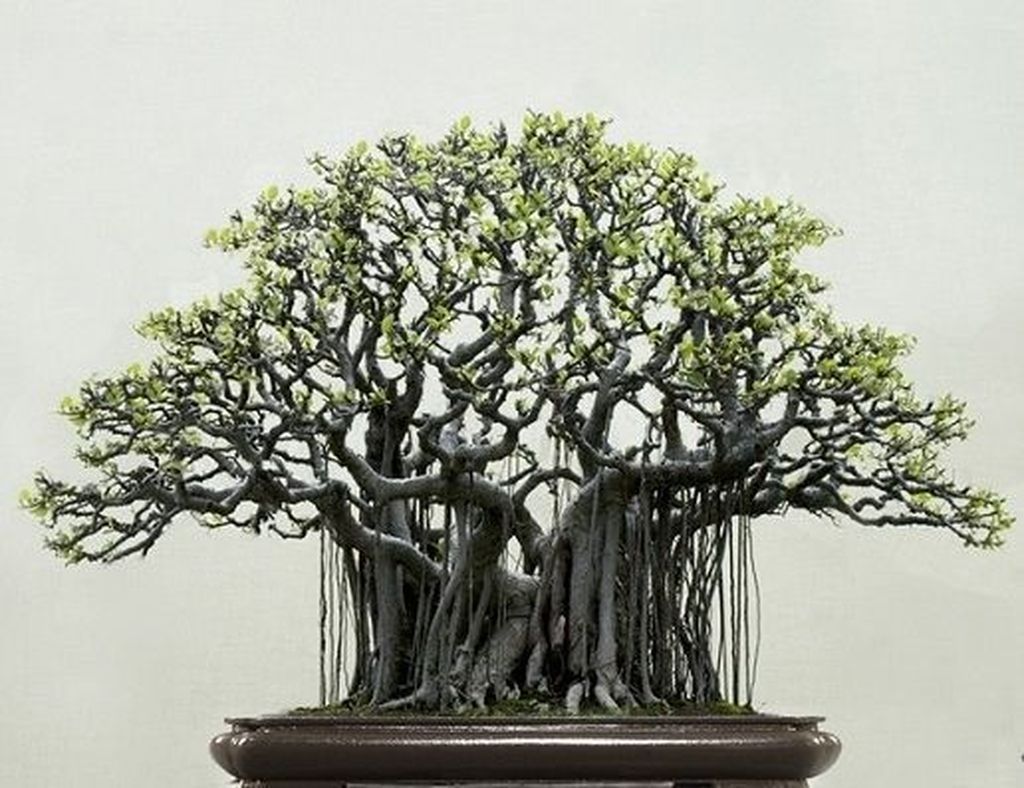
Bonsai. COURTESY
Bonsai is a Japanese version of the original traditional Chinese art penjing or penzai. Unlike penjing, which utilizes traditional techniques to produce entire natural sceneries in small pots that mimic the grandiose and shape of real life sceneries, the Japanese “bonsai” only attempts to produce small trees that mimic the shape of real life trees. Similar versions of the art exist in other cultures, including the miniature living landscapes of Vietnamese Hòn non bộ. It was during the Tang dynasty, when penjing was at its height, that the art was first introduced into Japan. The loanword ”bonsai” (a Japanese pronunciation of the original Chinese term penzai) has become an umbrella term in English, attached to many forms of potted or other plants, and also on occasion to other living and non-living things. According to Stephen Orr in The New York Times, “the term should be reserved for plants that are grown in shallow containers following the precise tenets of bonsai pruning and training, resulting in an artful miniature replica of a full-grown tree in nature.” In the most restrictive sense, “bonsai” refers to miniaturized, container-grown trees adhering to Japanese tradition and principles.
Japanese Maple
Japanese maples are some of the most extravagant trees for bonsai and are widely popular thanks to their brilliantly colored foliage and ease of care. Unlike some other bonsai specimens, Japanese maple bonsai are great for beginners and do not require as much care and skill to keep happy. Another benefit of the Japanese maple bonsai is that it does not require as much sunlight as most other bonsai varieties. The fine, delicate branches are flexible and easy to shape, lending well to the techniques involved in bonsai training.
Bodhi Tree
Bodhi tree are famous as ornamental bonsai plants. Bodhi Tree Bonsai not only look beautiful but are also easy to groom and train. They grow fast and can survive in harsh conditions to an extent. The maintenance is low and they do not require much care when compared to most of the bonsai plants. Bodhi trees belong to the Moraceae family and are native to India and south west china. They are semi evergreen trees that can grow up to a height of 38m when grown in their natural habitat. The leaves are green, cordate shaped with a drip tip. They bear figs which turn purple after ripening. The plants have a lifespan of up to 1500-3000 years and more.
Juniper
The juniper genus is made up of about 50 to 70 different species within the cypress family. They are evergreen coniferous trees or shrubs, which are very popular for Bonsai. The Juniper Bonsai trees that can be found in large stores, like Walmart and Home Depot, are often Japanese Garden Junipers, also known as Green Mound Junipers (Juniperus procumbens nana.) Other popular species include the Chinese juniper (Juniperus Chinensis,) the Japanese Shimpaku (Juniperus sargentii,) the Japanese needle juniper (Juniperus rigida,) two central European species: The savin (Juniperus sabina,) and the common juniper (Juniperus communis.)
Baobab
The Baobab is a striking tropical tree which is very well suited to be grown as a Bonsai. The Baobab Bonsai is easily grown and is as unusual as it is attractive. A baobab (Adansonia digitata) is an interesting addition to a bonsai collection. These trees are native to Africa and have an unusual structure and appearance. Some legends say that the tree was cast down from the heavens and landed upside down, where it began to grow. This story is no doubt a result of the tree’s appearance in the winter, when the upper branches of the tree look more like roots than treetops. The baobab has some specific needs, but if you pay careful attention to its requirements, this tree is not difficult to grow and makes an excellent bonsai specimen.






0 Comments